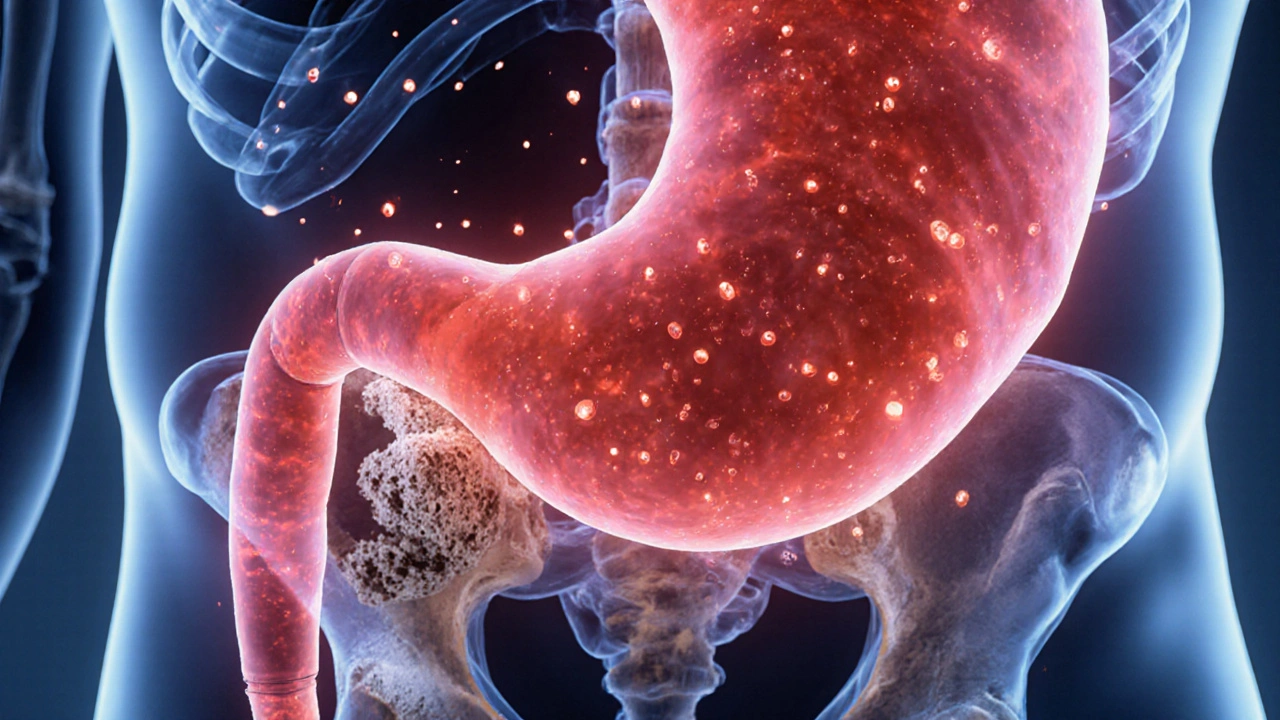Understanding Osteoporosis Risk
When thinking about osteoporosis risk the chance of developing weak, porous bones that break easily. Also known as bone loss risk, it is shaped by diet, hormones, and lifestyle, most people picture an old person with a broken hip. In reality, the risk starts building years before any fracture shows up. A key indicator is bone mineral density a measurement that tells how much mineral content is packed into your skeleton, and this number drops when calcium intake or vitamin D levels slip. Adequate calcium intake the amount of calcium you get from food or supplements and sufficient vitamin D levels the vitamin that helps your body absorb calcium are essential to keep that density up. Below you’ll find a range of articles that dig into each of these pieces.
Osteoporosis risk encompasses low bone mineral density, which often stems from age‑related bone loss. It requires sufficient calcium intake, because without enough calcium the body pulls the mineral from bone to keep blood levels stable. Lifestyle factors influence osteoporosis risk; a sedentary routine, smoking, and excess alcohol all speed up bone deterioration. Women facing menopause see a sharp rise in risk due to dropping estrogen, while men aren’t immune—genetics and long‑term steroid use can also tip the scales. People with a family history of fractures often inherit thinner bones, so they should watch their numbers early. Understanding these drivers helps you spot the red flags before a break happens.
How do you know where you stand? The gold‑standard test is a dual‑energy X‑ray absorptiometry scan, commonly called a DEXA scan, which provides a precise bone mineral density reading. Doctors compare your score to a young‑adult reference and label it as normal, osteopenia, or osteoporosis. Blood tests that check vitamin D levels and calcium metabolism fill in the picture, especially for people with digestive disorders that affect absorption. If the scan shows a T‑score below –2.5, the person is officially in the osteoporosis range and the fracture risk jumps dramatically. Most insurance plans cover the scan for anyone over 65 or for younger adults with risk factors, making early detection realistic.
How to Lower Your Osteoporosis Risk
Good news: you can shift the odds with everyday choices. Weight‑bearing exercises like walking, jogging, or resistance training stimulate bone formation, turning the mechanical stress into stronger skeleton material. Pair that with a diet rich in dairy, leafy greens, and fortified foods to hit the daily 1,000 mg calcium target for most adults. If you’re low on sunshine or live far north, a vitamin D supplement of 800–1,000 IU per day often does the trick. Limit caffeine and soda, which can leach calcium, and quit smoking to halt bone‑breaking chemicals. For people with already low bone density, doctors may prescribe bisphosphonates or newer agents that slow bone loss, but lifestyle still forms the backbone of any plan.
Medical options aren’t a cure‑all, but they can buy you time while you build bone strength. Common prescriptions include bisphosphonates, which attach to bone surfaces and slow the cells that break bone down. Selective estrogen receptor modulators (SERMs) give women a hormone‑like boost without full‑blown estrogen, and denosumab works by blocking a protein that signals bone loss. Each drug has its own side‑effect profile, so a discussion with your doctor about kidney health, stomach issues, and long‑term plans is crucial. Regular follow‑up scans every 1–2 years let you see if the treatment is working and adjust as needed.
Putting these pieces together—understanding why risk builds, how it’s measured, and what you can do to fight back—gives you a solid roadmap. The articles below break each topic down further, from detailed reviews of calcium‑rich foods to step‑by‑step guides on choosing the right exercise routine. Whether you’re checking your own risk or helping a loved one, the collection offers practical advice you can start using today.

Zollinger-Ellison Syndrome and Osteoporosis Risk: What You Need to Know
- Oct, 12 2025
- Daniel Remedios
- 16 Comments
Learn how Zollinger-Ellison syndrome raises osteoporosis risk, how to spot early bone loss, and practical steps to protect your skeleton while managing acid issues.
